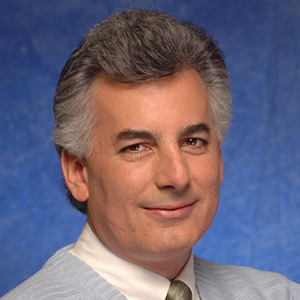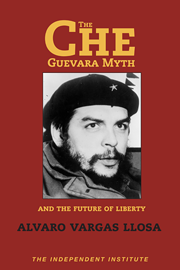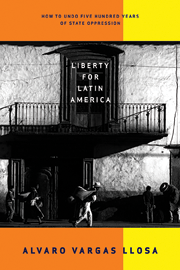One of the most enduring and flawed myths in economic development circles is that lifting the poor out of poverty requires the transfer of wealth from rich countries to poor, from the “haves” to the “have-nots” in underdeveloped nations.
While some who embrace such views acknowledge the role that entrepreneurship and free markets can play, they nevertheless cling to the belief that the road to riches for the masses involves government putting capital into their hands through grants, cheap credit and subsidies.
One problem is that intellectual elites, in rich and poor countries alike, often associate capitalism with pathological greed, corruption and abuse of power. They confuse free markets with large, sometimes corrupt corporations using political connections to concentrate wealth. This association is so powerful in some countries that the English word “business” is used at times as a synonym for criminal activity (usually accompanied by a knowing wink).
Experience shows, however, that government transfers have little to do with economic success. The real keys are individual creativity and initiative, and the sense and ability to address market needs as they arise. In one word, entrepreneurship.
Opportunity in a Bottle
Consider two success stories in Peru.
The first involves the Añaños family. A few decades ago, the Añañoses were making their living on a small farm in Ayacucho, a poor region terrorized by Shining Path, a Maoist organization that, among other abuses, disrupted transportation in the region. This created local shortages of various goods, including carbonated drinks.
This beverage void provided an opportunity to the Añaños family, which created a new low-cost soda and started producing it at home. They called it Kola Real.
The Añañoses did not seek or receive help from any government, nongovernmental organization or international aid agency. Instead, they invested their modest earnings in the new business—and then reinvested the profits into expansion.
In true entrepreneurial fashion, the family found ways to hold down costs, to navigate the labyrinthine Peruvian regulatory system and to outsmart their large competitors, both local and international, many of whom had an “in” with the authorities.
The Añañoses invited unemployed Peruvians with old vehicles to buy Kola Real at the bottling plants and resell it in their neighborhoods. They created a second tier of entrepreneurs who would prosper from Kola Real’s success.
The family also spurned mass media advertising, creating special marketing programs that would appeal to their low-income customers, such as exchanging Kola Real bottle caps for other consumer products.
Now the Añaños’s Ajegroup is the largest manufacturer of nonalcoholic beverages in Latin America, with 8,000 employees, sales estimated at $1 billion, and operations in nine Latin American countries and Thailand.
Opportunity in T-Shirts
Entrepreneurship was also what enabled Aquilino Flores to create a successful business. A migrant from Peru’s dirt-poor Huancavelica region, Flores moved to Lima and started washing cars for a living. At the behest of one of his clients, a clothing merchant, Flores started hawking cotton T-shirts in Lima’s Central Market area. Blank shirts sold slowly, so he found a subcontractor to print pictures on the shirts.
In 1996, Flores and his family decided to sew their own t-shirts, starting with a single sewing machine. A (U.S.) $10,000 order for the popular T-shirts from a border town between Peru and Bolivia prompted the family to enlist the help of other independent garment makers in the neighborhood, where a few years earlier Flores was a mere street vendor.
Soon they were able to open more workshops and retail outlets under the name Topy Top. The family made capital investments, purchased state-of-the-art machinery, created its own dye factories, added employees-and in less than a dozen years Topy Top had become Peru’s leading textile exporter, manufacturing 35 million garments a year (many of which are sold in Old Navy, Gap and Nike stores throughout the U.S.). Topy Top generates more than $100 million in annual sales and employs about 5,000 people.
The Añaños and Flores families’ stories are not isolated cases. Similar entrepreneurial, free-enterprise successes are occurring all over the world. In case after case, the power of creative enterprise defeats inflation, devaluation, punitive taxation, suffocating regulation, scant access to credit or seed capital, and business environments dominated by crony capitalism.
The Real Lesson
These stories should remind us of something many people in rich countries have lost sight of, perhaps because they started their successful journeys so long ago: Free-enterprise capitalism, embodied in entrepreneurialism, is all about the little guy. Big companies exist because some little guys some time in the past beat the odds.
The Floreses and the Añañoses were “little guys” who ultimately transformed their respective industries by responding to the desires of ordinary consumers. As a consequence of the response to their humble offerings, they created job opportunities for thousands of workers, business opportunities for countless suppliers, and inexpensive products for millions of consumers.
The overwhelming evidence pointing to entrepreneurship as the critical ingredient in wealth formation means that governments need to step aside.
People who start and grow businesses don’t need a government’s help; they need assurances that government will not destroy their efforts through taxation or regulation or – worst and most common of all – by bestowing favors on their competitors.
In such circumstances, the success stories from Latin America and elsewhere would multiply endlessly.












